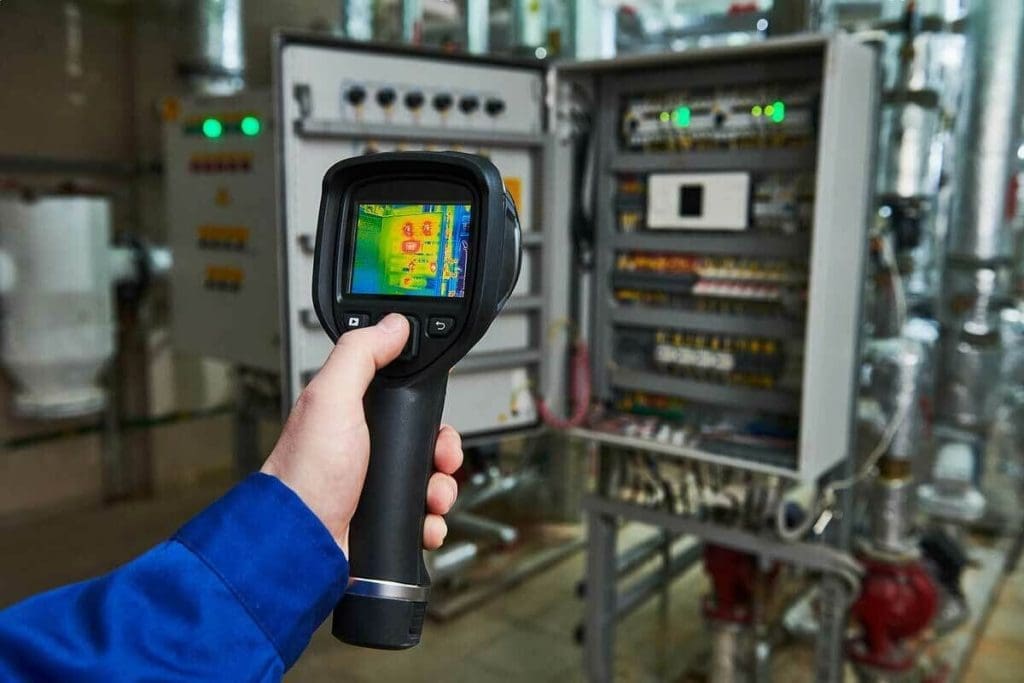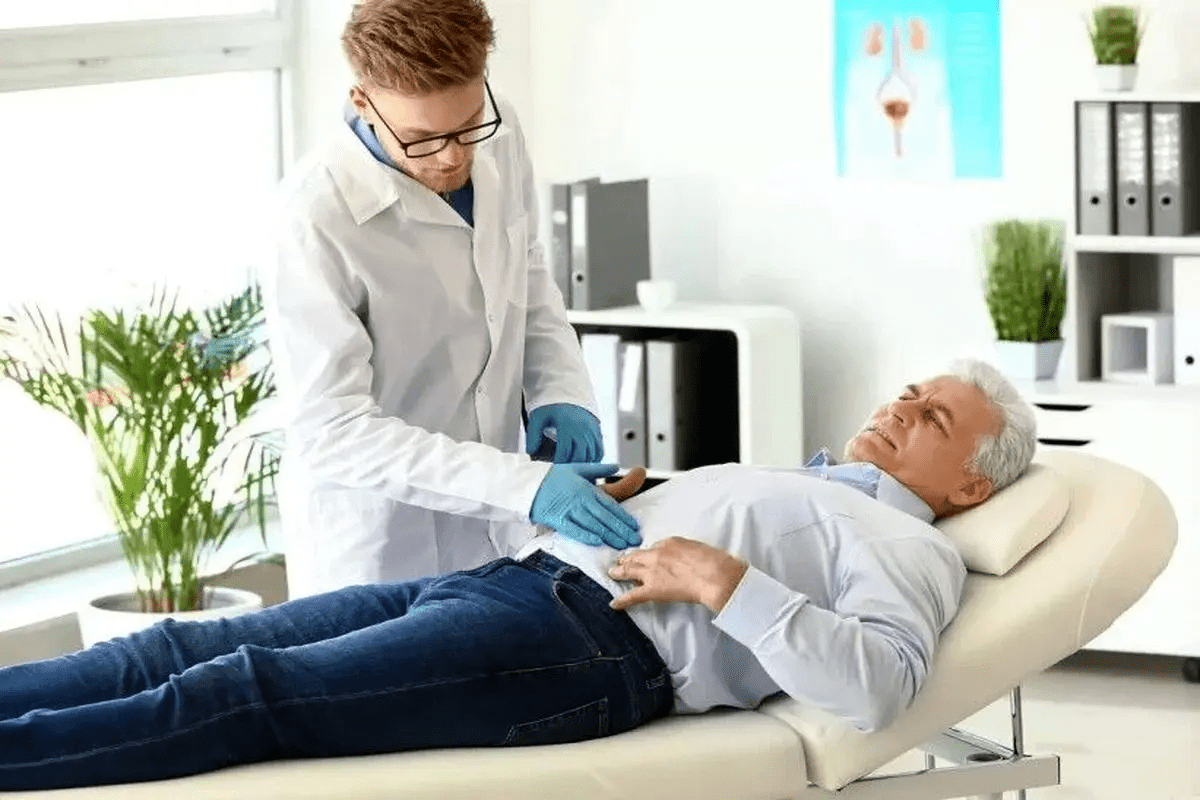Last Updated on November 27, 2025 by Bilal Hasdemir

In the world of medical technology, it’s key to know about radiation-emitting devices. In the U.S., these devices are closely watched and are crucial for better treatments and tests.Explore emit radiation sources, common devices, and exposure risks found at home, hospital, and the workplace.
The FDA makes sure radiation equipment is safe. At Liv Hospital, we see how important these devices are. They help in many areas of medicine and beyond.
Key Takeaways
- The FDA regulates radiation-emitting devices to ensure safety.
- These devices are crucial for diagnostic and therapeutic purposes.
- Radiation-emitting devices have various medical and non-medical applications.
- Liv Hospital emphasizes patient-centered care with innovative medical solutions.
- Safety measures are in place for the use of radiation equipment.
The Science Behind Devices That Emit Radiation

Radiation technology is getting better, and we need to know how it works in healthcare. We use devices that send out radiation for many medical needs, like taking pictures inside the body and treating cancer. It’s key to understand these devices well to use them safely and right.
Types of Radiation and Their Effects
Radiation falls into two main groups: ionizing and non-ionizing. Ionizing radiation can knock electrons out of atoms, making ions. This includes X-rays, gamma rays, and alpha particles. Non-ionizing radiation, with less energy, can’t do this. It includes radiofrequency waves, microwaves, and infrared.
The impact of radiation on living tissues varies by type and energy. Ionizing radiation can harm DNA, which might lead to cancer or genetic changes. Non-ionizing radiation, though safer, can still cause tissue heating with too much exposure.
Ionizing vs. Non-Ionizing Radiation
Knowing the difference between ionizing and non-ionizing radiation is vital. Ionizing radiation is used in treatments like cancer therapy and imaging because it can kill cancer cells or show detailed body pictures.
- Ionizing radiation is used in:
- Cancer treatment (radiation therapy)
- Diagnostic imaging (X-rays, CT scans)
- Nuclear medicine
- Non-ionizing radiation is used in:
- Microwave ovens
- Cell phones and wireless communication devices
- Infrared heating and therapy
Grasping these differences helps us see if radiation devices are safe and work well for medical and other uses.
Regulation of Radiation-Emitting Devices in the USA

The FDA is key in regulating devices that emit radiation in the U.S. These devices are used for medical treatments and tests. They must be safe for use.
The FDA’s Center for Devices and Radiological Health (CDRH) oversees these devices. The CDRH makes sure they meet safety standards. This helps reduce radiation exposure for patients and workers.
FDA’s Electronic Product Radiation Control Provisions
The FDA has rules for electronic products that emit radiation. These rules are part of the Federal Food, Drug, and Cosmetic Act. They ensure these products are designed to reduce radiation exposure.
The rules require manufacturers to:
- Implement safety features in their devices
- Provide clear instructions for use
- Conduct rigorous testing to ensure compliance with safety standards
Safety Standards and Compliance Requirements
Radiation-emitting devices must follow strict FDA safety standards. These standards include limits on radiation levels and design and testing requirements.
| Device Type | Safety Standard | Compliance Requirement |
| X-Ray Machines | Limit on radiation dose | Regular inspection and maintenance |
| CT Scanners | Control of radiation exposure | Quality control program |
| Mammography Units | Image quality and dose limits | Annual inspection and accreditation |
The FDA says, “Regulating radiation-emitting products is crucial to protect public health.”
“The FDA’s role in regulating radiation-emitting devices is to ensure that these devices are safe and effective, and that their benefits outweigh their risks.”
FDA Statement
The FDA’s rules for radiation-emitting devices cover many areas. This includes design and user safety. These rules are vital for public health and safety in radiation technology.
The Growing Market for Radiation Technology in Healthcare
Advances in radiation technology are changing healthcare. They are creating new ways to diagnose and treat diseases. This makes radiation technology more important in healthcare every day.
Current Market Size and Projections
The U.S. irradiation apparatus market is expected to grow a lot. This is because of better radiotherapy and imaging. The need for accurate tools is rising, especially for cancer treatment.
Investments in radiation technology are increasing. The market is expected to grow fast over the next few years. This growth is due to more people wanting non-invasive treatments.
Healthcare providers are using radiation technology more. This is to improve patient care and outcomes. It’s making healthcare better for everyone.
Factors Driving Demand for Non-Invasive Procedures
Many things are making people want non-invasive treatments. Chronic diseases like cancer need precise treatments. The aging population in the U.S. also needs more imaging and therapy.
Patients prefer less invasive treatments. They want faster recovery times and fewer risks. Advances in radiation technology are making treatments more targeted and effective.
We expect the demand for radiation technology in healthcare to keep growing. This is because of ongoing medical advancements and the need for better treatments.
X-Ray Machines: Diagnostic Imaging Foundations
X-ray machines are key in medical imaging. They have changed a lot since they were first used. Now, we have advanced digital systems compared to the old film-based ones.
Evolution of X-Ray Technology
Wilhelm Conrad Röntgen discovered X-rays in 1895. Since then, X-ray machines have become crucial in medical diagnostics. They help doctors see inside the body and diagnose many conditions.
The switch from film to digital X-rays has improved image quality. It also means patients get less radiation.
“Digital X-ray technology has changed how we do imaging,” say doctors. It lets us get better images with less radiation. This makes diagnosis more accurate and safer for patients.
Safety Protocols and Radiation Exposure Limits
Keeping patients safe during X-rays is very important. We follow strict rules to lower radiation exposure. This includes using the right shielding and keeping X-ray machines in top shape.
- Implementing the ALARA principle
- Regular maintenance of X-ray equipment
- Training personnel on safety protocols
Modern Applications in Medical Diagnostics
X-ray machines are used for many things today. They help check bones and find objects inside the body. New tech like computed radiography and digital tomosynthesis has made X-rays even better.
Research is always looking for ways to make X-rays safer and clearer. As technology advances, X-rays will keep being a big part of medical imaging.
CT Scanners: 3D Imaging Revolution
CT scanners have changed medical imaging, giving us 3D views. They help doctors see inside the body. This helps in diagnosing and treating many health issues.
Operating Principles of Computed Tomography
CT scanners use X-rays to make 3D images of the body’s inside. They rotate around the patient, capturing data. Then, they use advanced algorithms to make the images clearer.
Over time, CT scanners have gotten better. Now, they can scan faster and make clearer images. This makes them very useful in medicine today.
Radiation Dose Considerations and Reduction Techniques
CT scans are very helpful, but we must be careful about radiation. We use special techniques to lower radiation. This includes adjusting the dose and using new ways to make images.
Managing radiation is key when using CT scans. We adjust settings for each patient and use shields to protect certain areas. This way, we can make images without too much radiation.
| Technique | Description | Benefit |
| Dose Modulation | Adjusts X-ray dose based on patient size and scan area | Reduces radiation exposure |
| Iterative Reconstruction | Reconstructs images using multiple iterations to improve quality | Enhances image clarity at lower doses |
| Shielding | Protects sensitive areas from X-ray exposure | Minimizes radiation to non-target areas |
Clinical Applications and Diagnostic Benefits
CT scans are key in diagnosing many conditions. They help see injuries, cancers, and heart diseases. The 3D images help doctors plan treatments better.
We use CT scans in many areas, like emergency care, cancer treatment, and brain studies. They help doctors make accurate diagnoses. This leads to better care for patients.
Understanding CT scanners shows how they’ve improved healthcare. As technology gets better, we’ll see even clearer images and less radiation. This will make CT scans even more helpful.
Mammography Units: Breast Cancer Detection
Mammography units are key in finding breast cancer early. They use medical tech to get clear images of the breast. This helps doctors spot signs of cancer.
There have been big steps forward in mammography tech. Digital mammography is now better than the old methods. It gives clearer images, works faster, and is easier to store and share.
Digital vs. Conventional Mammography
The move to digital mammography has been a big win. It lets doctors tweak images to spot small issues better.
Older mammography has its limits. It’s not as clear and needs physical storage. Digital mammography is more efficient and accurate for screening.
3D Tomosynthesis and Advanced Screening
3D tomosynthesis is a big leap in mammography. It shows the breast in 3D, helping find problems more accurately, especially in dense breasts.
3D tomosynthesis boosts detection rates and cuts down on false alarms. It’s great for those with a cancer history or dense breasts.
Radiation Safety Protocols for Patients
Mammography is vital for finding cancer, but safety is key. We keep doses low while keeping images clear. This follows strict radiation safety protocols.
We focus on safety with regular checks, training, and teaching patients. This ensures everyone knows the benefits and risks of mammography.
Radiation Therapy Equipment for Cancer Treatment
Radiation therapy is a key cancer treatment, giving hope to people everywhere. It uses special equipment to send precise doses of radiation to tumors. This helps protect healthy tissue around the tumor.
Linear Accelerators and Their Function
Linear accelerators are vital in radiation therapy. They create high-energy beams that target tumors. This kills cancer cells while keeping healthy tissue safe.
Experts say linear accelerators have changed cancer treatment for the better. They allow for more precise and effective therapy.
We use linear accelerators in different radiation therapy methods. These include IMRT and VMAT. These methods help us adjust the radiation dose to fit the tumor’s shape and size.
Targeted Radiation Approaches
Targeted radiation methods have become more advanced. They allow for precise treatment of tumors. Techniques like SBRT and SRS give high doses of radiation to specific areas.
This precision has greatly improved patient outcomes and reduced side effects, studies show. We keep improving these methods. We use real-time imaging and motion management to ensure accurate radiation delivery.
Safety Measures for Patients and Healthcare Workers
Safety is a top priority in radiation therapy. We have strict safety rules to protect patients and staff from radiation. This includes regular equipment checks, quality control, and staff training.
We make sure patients get the right dose of radiation. This helps achieve the best treatment effect while keeping healthy tissue safe. “Effective radiation control is crucial in preventing unnecessary radiation exposure,” safety guidelines say.
By using the latest radiation therapy equipment and strict safety rules, we offer effective cancer treatment. We also protect the health of our patients and staff.
Nuclear Medicine Imaging Devices
Nuclear medicine imaging is key in medical diagnostics. It uses radiopharmaceuticals to see how the body works. This helps doctors make accurate diagnoses and treatment plans.
PET and SPECT Scanners
PET and SPECT scanners are crucial in nuclear medicine. PET scanners show detailed images of how the body uses energy. They help find cancer, brain disorders, and heart diseases. SPECT scanners show where radiopharmaceuticals go in the body. This helps check how organs work.
“The mix of PET and SPECT has greatly helped us diagnose and treat complex diseases,” says a top nuclear medicine expert. “These tools are essential in today’s healthcare.”
Radiopharmaceuticals and Their Applications
Radiopharmaceuticals are special substances that give off radiation. They work with PET and SPECT scanners. These substances target specific parts of the body, giving detailed images of how they work.
- Fluorodeoxyglucose (FDG) is often used in PET scans for cancer.
- Technetium-99m is used in SPECT scans for bone and heart imaging.
Radiation Protection in Nuclear Medicine
Working with radiopharmaceuticals means following strict safety rules. This keeps everyone safe from radiation. We use shielded syringes and remote devices for safe use.
ALARA (As Low As Reasonably Achievable) is key in nuclear medicine. It helps us keep radiation doses low while still getting good images. This is important for safety and effectiveness.
Microwave Ovens and How They Emit Radiation
Microwave ovens are common in homes. They use non-ionizing radiation to cook food quickly. This raises questions about safety and health.
Microwave Radiation Mechanics
Microwave ovens produce radiation at 2.45 gigahertz. This frequency heats food well because it’s absorbed by water, fats, and sugars. A magnetron device turns electrical energy into microwave energy.
Key aspects of microwave radiation mechanics include:
- The production of microwaves by the magnetron
- The absorption of microwaves by food and liquids
- The containment of microwaves within the oven cavity
Safety Features and FDA Regulations
Microwave ovens have safety features to prevent radiation leakage. The FDA sets limits on radiation leakage. Manufacturers must follow these rules to keep consumers safe.
Some of the safety features include:
- Interlocks that prevent the oven from operating when the door is open
- Metal mesh in the door to contain microwaves
- Safety seals around the door
The FDA says microwave ovens are safe when used correctly. The agency keeps an eye on microwave oven safety.
Myths vs. Facts About Microwave Radiation
There are myths about microwave ovens and their radiation. Let’s clear up the confusion:
“Microwave ovens make food radioactive.” This is a common myth. In reality, microwave ovens do not make food radioactive; they heat food by causing water molecules in the food to vibrate.
Facts about microwave radiation:
- Microwave radiation is non-ionizing, meaning it doesn’t have enough energy to break chemical bonds or cause DNA damage directly.
- The radiation is confined within the oven, and ovens are designed to prevent leakage.
- Cooking in a microwave oven is as safe as other cooking methods when the oven is in good condition and used properly.
Understanding how microwave ovens work and their safety features helps consumers use them safely. This minimizes exposure to microwave radiation.
Cell Phones and Wireless Communication Devices
Cell phones and wireless devices are everywhere today. But, we still don’t know all about their health effects. It’s important to understand the risks and how to lower our exposure.
Radiofrequency Radiation Exposure
Cell phones and devices send out radiofrequency radiation (RF). This happens when we use them, like when we call or text. The amount of RF we get depends on the device’s power, how close it is to our body, and how long we use it.
Reducing RF exposure is easy. We can use hands-free options, keep devices away from our bodies, and make calls shorter.
Current Research on Health Effects
Research on RF radiation from cell phones and devices is ongoing. Some studies suggest a link to health problems, but others don’t find any proof. It’s a mixed bag.
“The scientific evidence does not demonstrate any link between wireless device use and cancer or other illnesses.”
World Health Organization
Even with mixed results, more research is needed. Health groups around the world keep watching new studies and updating their advice.
| Health Organization | Guideline |
| WHO | Classifies RF electromagnetic fields as “possibly carcinogenic to humans” |
| FCC | Sets limits on the Specific Absorption Rate (SAR) of RF energy |
| ICNIRP | Provides guidelines on limiting exposure to electromagnetic fields |
Minimizing Exposure in Daily Use
To cut down on RF exposure, we can follow some simple steps:
- Use a headset or speakerphone when making calls
- Keep the device away from the body when not in use
- Limit the duration of calls
- Use text or messaging services instead of voice calls
By knowing about RF exposure and taking steps to reduce it, we can lower our risks. This way, we can still enjoy the benefits of wireless technology safely.
Radiation Safety Best Practices in Medical Settings
Keeping patients and medical staff safe from radiation is key in healthcare. We focus on using safe radiation measures to lower risks from devices that emit radiation.
Implementing the ALARA Principle
The ALARA principle is all about keeping radiation exposure low. It means we aim to use the least amount of radiation needed for medical tests or treatments. We follow this by making sure our imaging is set up to use the least amount of radiation.
Key Strategies for ALARA Implementation:
- We regularly check and update our imaging methods to use less radiation.
- We use systems to track and study radiation doses.
- We train healthcare workers on how to stay safe from radiation.
Protective Equipment and Protocols
Using protective gear and strict rules are key to lowering radiation risks. We use lead aprons, thyroid shields, and lead-lined glasses to protect everyone.
| Protective Measure | Purpose | Benefit |
| Lead Aprons | Protects against scatter radiation | Reduces whole-body exposure |
| Thyroid Shields | Protects the thyroid gland | Reduces risk of thyroid cancer |
| Lead-lined Glasses | Protects the eyes | Reduces risk of cataracts |
Patient Education and Informed Consent
Telling patients about the risks and benefits of radiation tests is vital. We make sure patients know what’s going on and help them make choices about their care.
By following these safety steps, we can greatly lower the risks of radiation in medical settings. This makes a safer place for patients and healthcare workers.
Conclusion: The Future of Radiation Technology in American Healthcare
Looking ahead, radiation technology will remain crucial in American healthcare. New advancements will boost both diagnosis and treatment, leading to better health outcomes for patients.
The future looks bright for radiation technology, with ongoing improvements in medical imaging and therapy. We expect safer and more effective uses of radiation in medicine. This will drive innovation and enhance care quality.
As technology evolves, we’ll see more accurate diagnoses, targeted treatments, and safer care. It’s vital to balance the benefits of radiation technology with safety and responsible use.
By adopting the latest in radiation technology, healthcare providers can offer top-notch care. This will benefit patients in the U.S. and globally.
FAQ
What are the most common radiation-emitting devices used in the USA?
In the USA, common devices that emit radiation include X-ray machines and CT scanners. Also, mammography units, radiation therapy equipment, and nuclear medicine imaging devices are used.
How does the FDA regulate radiation-emitting devices?
The FDA controls these devices through its Electronic Product Radiation Control provisions. It makes sure devices are made and used to lower radiation exposure to people and workers.
What is the difference between ionizing and non-ionizing radiation?
Ionizing radiation can remove electrons from atoms, which can damage DNA and increase cancer risk. Non-ionizing radiation has less energy and is safer, but can still cause tissue heating.
Are microwave ovens safe in terms of radiation emission?
Yes, microwave ovens are safe. They have safety features to prevent radiation exposure. The FDA checks their radiation emissions. When used right, they are safe, keeping radiation inside.
How can I minimize my exposure to radiofrequency radiation from cell phones?
To reduce exposure, use a headset or speakerphone. Keep calls short. Avoid carrying your phone in a pocket or against your body. Choose a phone with a lower Specific Absorption Rate (SAR).
What is the ALARA principle in radiation safety?
The ALARA principle means using the lowest dose possible for safety. It’s a rule for keeping radiation exposure low for patients and workers.
How do radiation therapy equipment and nuclear medicine imaging devices ensure safety?
These devices have safety features like shielding and dose monitoring. They follow strict protocols for handling radioactive materials. This protects patients and workers.
What are the benefits of digital mammography compared to conventional mammography?
Digital mammography is better for finding problems. It also stores and sends images easily. Plus, it lets doctors adjust images for better detection.
How do CT scanners balance image quality with radiation safety?
CT scanners use special techniques to lower radiation dose. They adjust X-ray beam intensity and use new algorithms. This keeps image quality high while reducing radiation.
What is the role of the FDA’s Center for Devices and Radiological Health in radiation safety?
The FDA’s Center for Devices and Radiological Health checks the safety and effectiveness of devices. This includes diagnostic imaging and radiation therapy devices.
Reference
- Ionizing Radiation – Control and Prevention – OSHAhttp://www.osha.gov/ionizing-radiation/control-prevention






